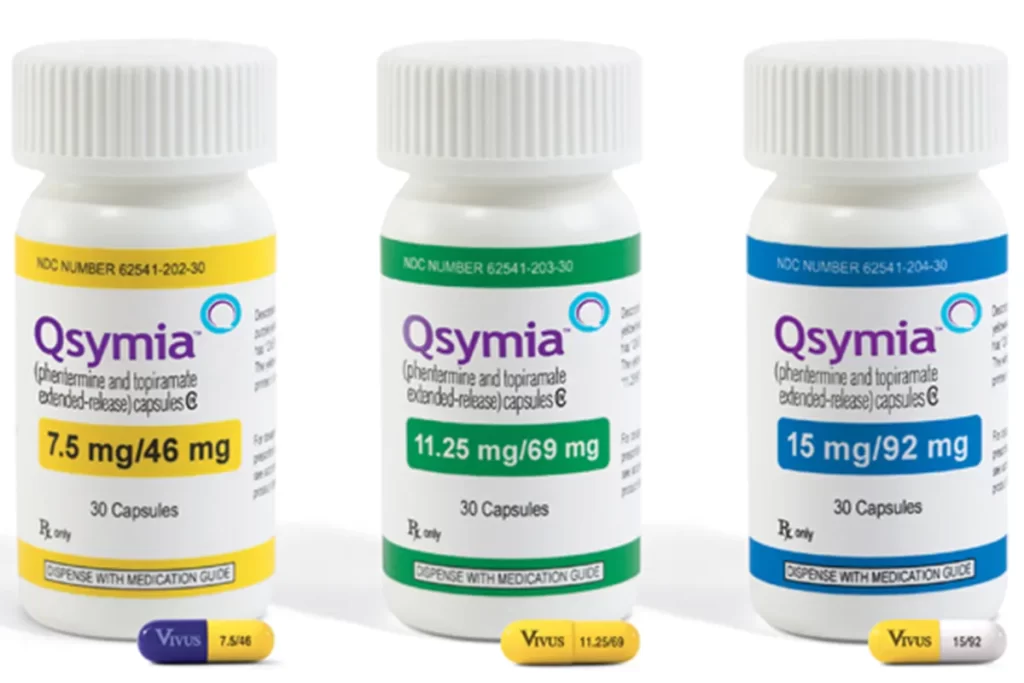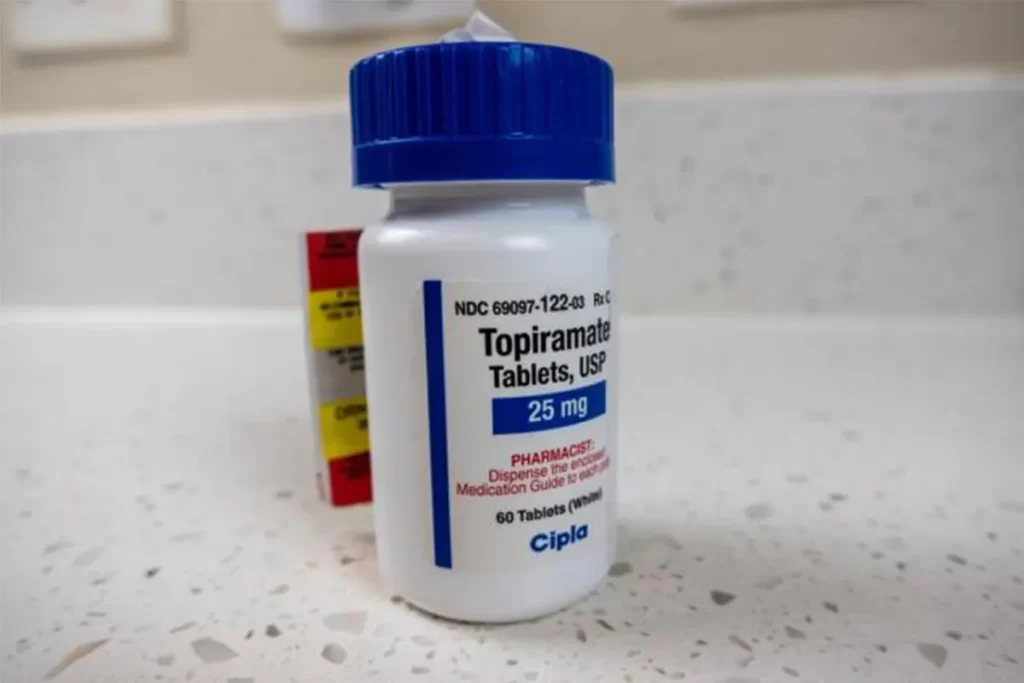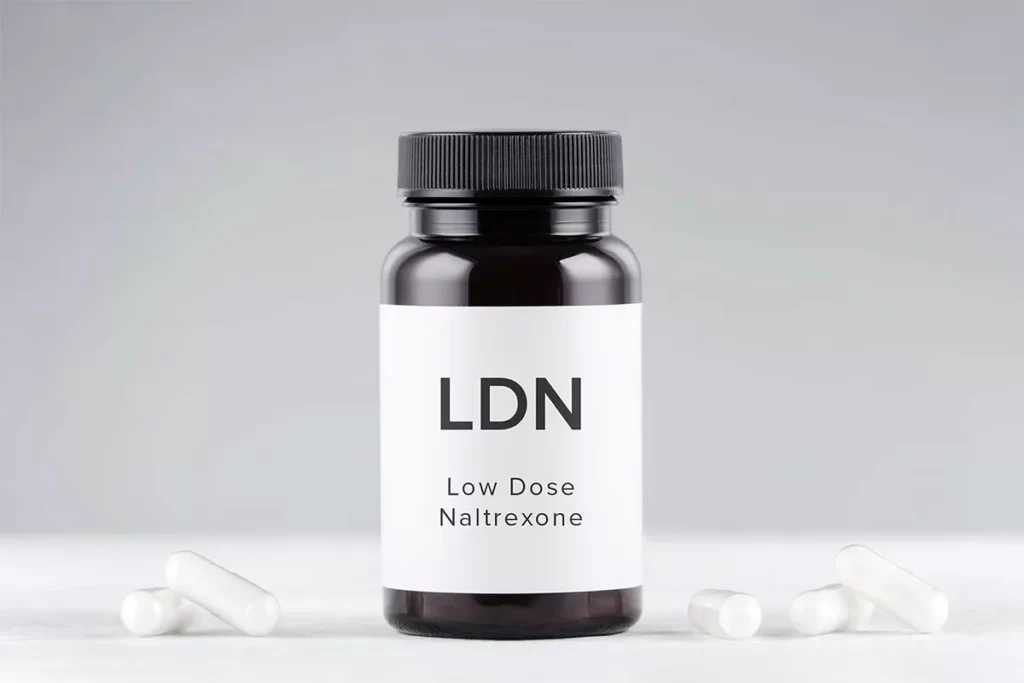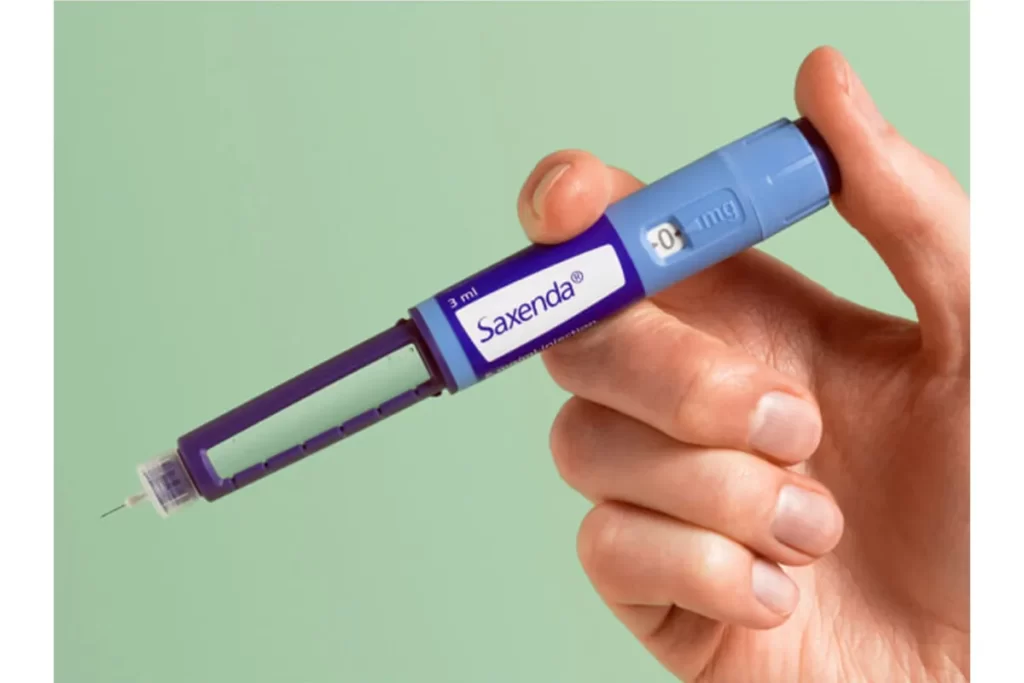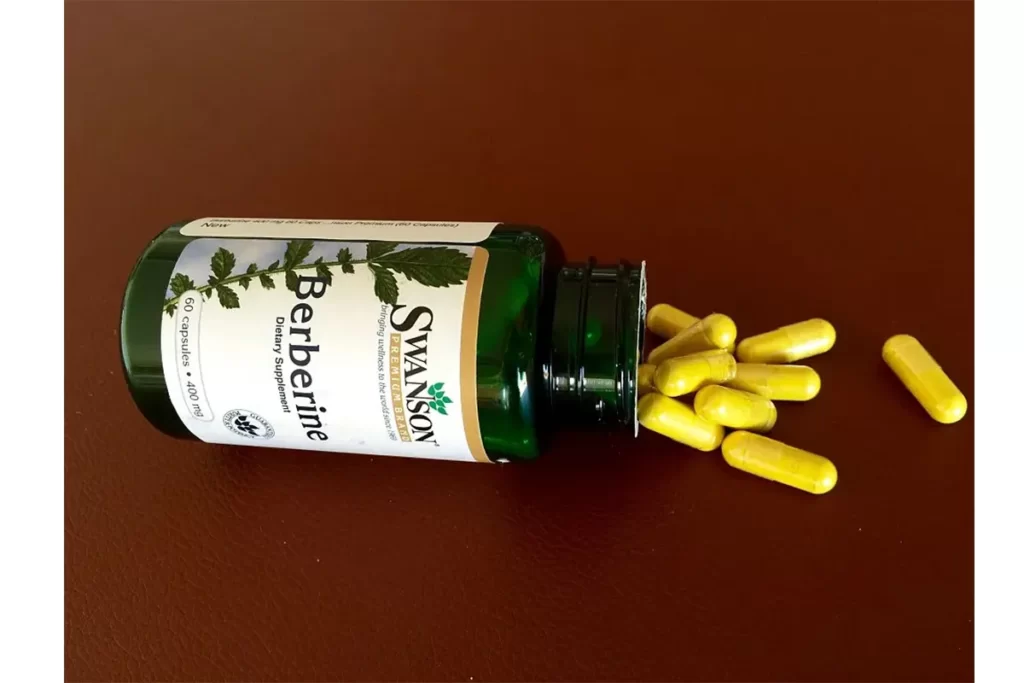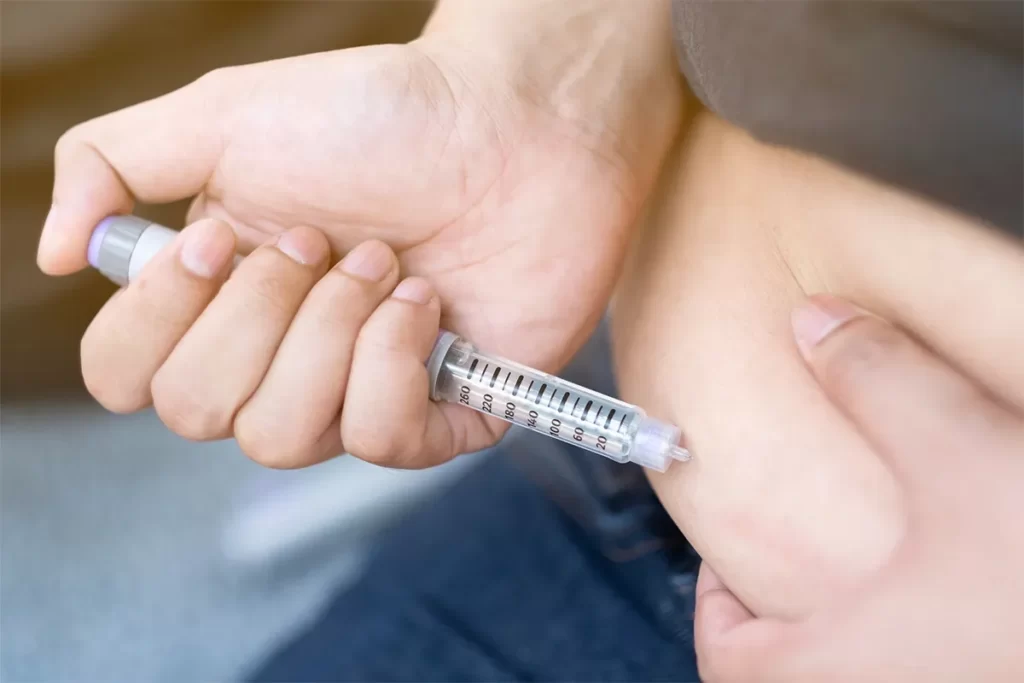Pouch Reset 10-Day Diet: Lose Weight After Weight Gain
-
 Written by
Michael J. Ormsbee
Written by
Michael J. Ormsbee
- LAST UPDATED October 8, 2023
Bariatric surgery procedures like gastric bypass and sleeve gastrectomy have proven effective for significant weight loss for most patients. However, in the years following surgery, many experience weight regain due to pouch stretching and loss of restriction. Pouch reset has emerged as an option to help reignite weight loss by temporarily restricting intake to shrink the stomach pouch back to its original post-operative size. When combined with lifestyle changes, pouch reset offers hope to those struggling with weight regain after bariatric surgery.
What is Pouch Reset?
Pouch reset refers to following a strict short-term diet to help narrow or tighten the stomach pouch that was surgically created during bariatric procedures like gastric bypass or sleeve gastrectomy. This aims to return the pouch to the same smaller size it was immediately after surgery to restore the restriction that enabled initial quick weight loss.
The goal of pouch reset is to give the gastrointestinal system a “reset”—eliminating intolerances, reducing inflammation, and shrinking the stomach capacity after the pouch has stretched out over time, which is a common cause of weight regain. This provides a jumpstart for additional weight loss moving forward.

Who is Pouch Reset For?
Pouch reset is specifically targeted to bariatric surgery patients who have experienced weight regain or a long-term plateau. This regain often occurs because the small gastric pouch or stoma opening created during surgery gradually stretches back out, allowing the patient to consume more food and calories.
Patients who had significant weight loss in the first 1-2 years after bariatric surgery, but then reached a plateau or regained weight, are ideal candidates for a pouch reset protocol to get back on track with weight reduction.
Pouch reset to tighten the stomach pouch makes the most sense for those patients who:
- Are reasonably compliant with the recommended post-op diet but still re-gaining
- Do not have untreated binge eating disorder or emotional eating issues
- Are motivated to use the pouch reset to launch further dietary changes
- Will adhere to the strict reset diet and permanent lifestyle adaptations
Pouch reset is not recommended as a first step for all post-bariatric patients. For those with minimal weight loss from surgery or lack of long-term diet compliance, other interventions may be attempted first before a pouch reset protocol.
Causes of Weight Regain After Bariatric Surgery
There are several possible reasons why many bariatric patients gradually regain weight 2 or more years after their surgery:
Pouch Stretching
The small gastric pouch created during surgery slowly enlarges as it is continually stretched by food intake. A larger pouch allows the consumption of bigger meals and greater calories, hindering weight loss.
Stoma Stretching
For gastric bypass patients, the stoma opening between the stomach pouch and intestine can also widen back up, reducing the restrictive effect to promote weight regain.
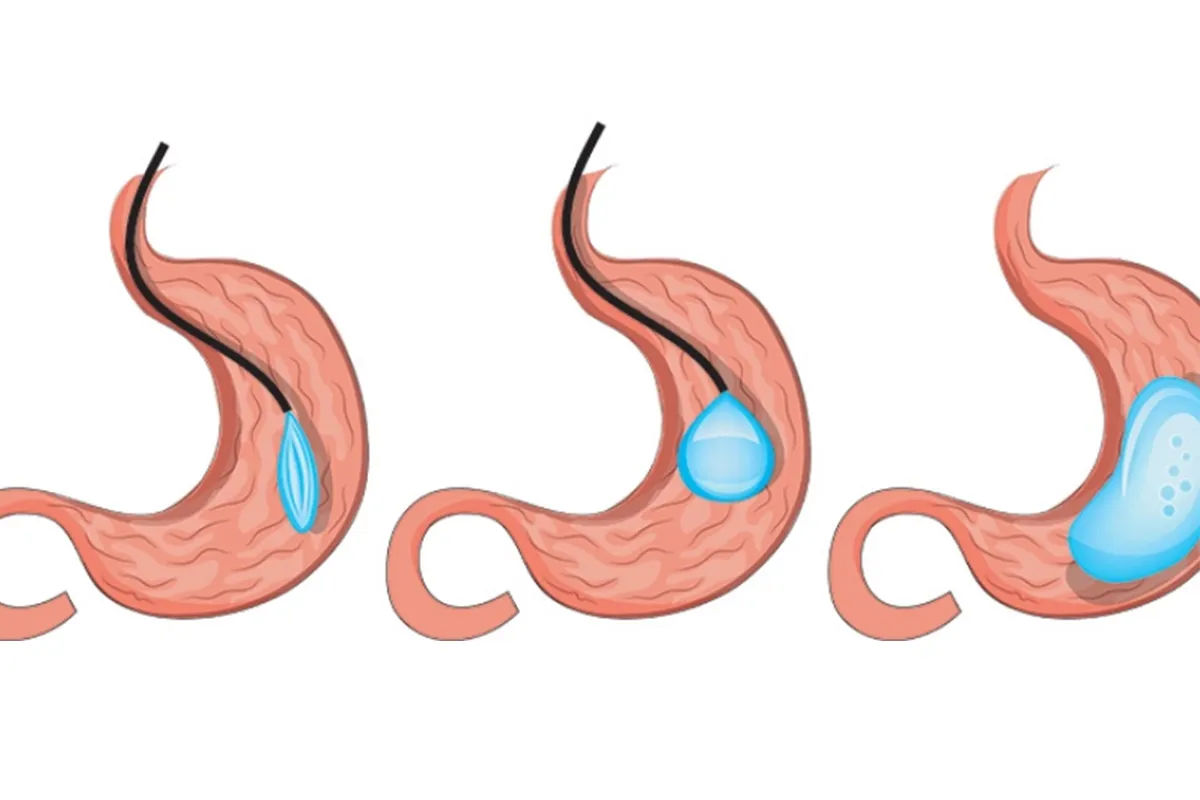
Loss of Restriction
As the pouch and/or stoma stretch, patients lose the sensation of fullness and restriction after eating smaller portions which leads to initial quick weight loss.
Returning to High-Calorie Foods
Many patients gradually revert to eating high-calorie, sugary, fatty foods which their surgery initially restricted. Without the forced restriction, weight gain resumes.
Reduced Ghrelin Suppression
Suppressed ghrelin results in reduced hunger following surgery. But as the pouch stretches, ghrelin levels may start to elevate again, increasing appetite.
Inadequate Exercise
Without sufficient daily physical activity, metabolism slows, and weight loss plateaus. Lack of exercise is a key factor in weight regain.
Mindless Eating Habits
If mindful eating habits are not developed, it becomes easy to mindlessly overeat high-calorie foods despite the bariatric surgery.
How Does Pouch Reset Work?
The pouch reset process involves returning to an all-liquid diet for a period of at least 10 days, then gradually reintroducing pureed and soft solid foods over 2-6 weeks under the close guidance of your bariatric team. This restricted intake results in rapid weight loss as calories are minimized. Combined with the liquid diet, this shrinks the size of the stretched-out pouch so it once again becomes too small to accommodate larger portions. This restores the mechanical restriction that led to initial weight loss after surgery.
Along with gastric restriction through a smaller stomach pouch size, gut hormones like GRELIN also change, helping to suppress appetite and retrigger weight loss. Essentially, pouch reset aims to recapture the postoperative physiological and behavioral changes that resulted in significant weight loss initially after surgery.
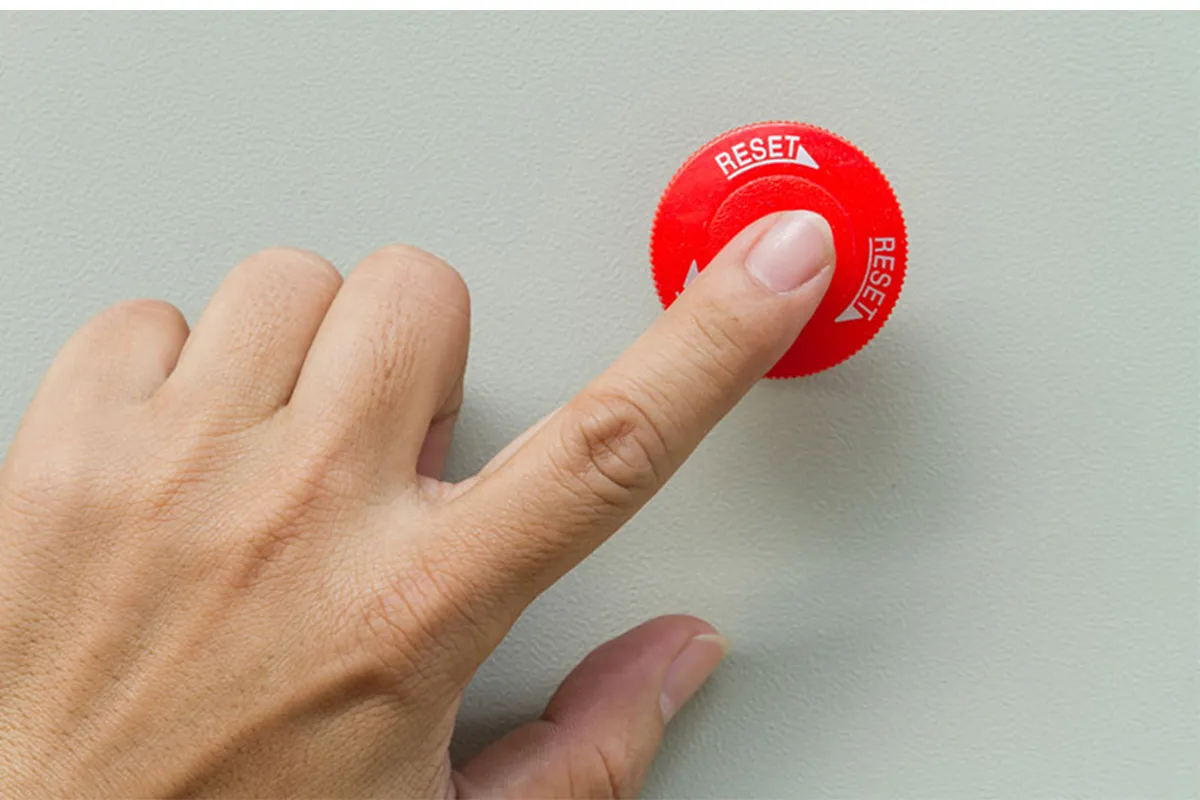
The Pouch Reset Diet Protocol
The pouch reset protocol entails following a staged, very low-calorie diet for a minimum of 10 days under medical supervision. This typically consists of:
- Phase 1: 3 days clear liquids only
- Phase 2: 3 days full liquids including protein shakes
- Phase 3: 3 days of blended pureed foods
- Phase 4: Reintroduction of soft protein foods
Throughout all phases of a pouch reset cleanse, patients must focus on getting at least 60-80 grams of protein daily through shakes and purified supplements. Multivitamins, electrolyte supplements, and other minerals are also important since calories are so limited.
Here is a sample daily meal plan during a 10-day pouch reset protocol:
Day 1:
Breakfast: 1 protein shake + vitamins
Mid-morning: 1 cup clear broth
Lunch: 1 cup clear vegetable soup
Afternoon: 1 sugar-free jelly
Dinner: 1 cup clear protein soup
Evening: 1 protein shake
Day 2:
Breakfast: 1 protein shake + vitamins
Mid-morning: 1 cup chicken broth
Lunch: 1 cup mixed vegetable soup
Afternoon: 1 sugar-free popsicle
Dinner: 1 cup clear bean soup
Evening: 1 protein shake
Day 3:
Breakfast: 1 protein shake + vitamins
Mid-morning: 1 cup fish broth
Lunch: 1 cup mixed fruit juice
Afternoon: 1 sugar-free jelly
Dinner: 1 cup protein milkshake soup
Evening: 1 protein shake
Day 4:
Breakfast: 1 protein shake + vitamins
Mid-morning: 1 cup mixed vegetable soup
Lunch: 1 fruit-flavored protein shake
Afternoon: 1 sugar-free popsicle
Dinner: 1 cup mixed vegetable soup
Evening: 1 protein shake

Day 5:
Breakfast: 1 protein shake + vitamins
Mid-morning: 1 cup clear meat broth
Lunch: 1 fruit juice + protein powder
Afternoon: 1 sugar-free jelly
Dinner: 1 cup tofu vegetable soup
Evening: 1 protein shake
Day 6:
Breakfast: 1 protein shake + vitamins
Mid-morning: 1 cup chicken broth
Lunch: 1 cup blended vegetable slurry
Afternoon: 1 sugar-free popsicle
Dinner: 1 protein shake + 1 tbsp sugar-free jam
Evening: 1 protein shake
Day 7:
Breakfast: 1 protein shake + vitamins
Mid-morning: 1 cup clear seafood soup
Lunch: 1 cup vegetable soup + 1 tbsp protein powder
Afternoon: 1 sugar-free jelly
Dinner: 1 cup tofu egg drop soup
Evening: 1 protein shake
Day 8:
Breakfast: 1 protein shake + vitamins
Mid-morning: 1 cup chicken broth
Lunch: 1 cup vegetable slurry + 1 tbsp protein powder
Afternoon: 1 sugar-free popsicle
Dinner: 1 cup mixed veggie tofu soup
Evening: 1 protein shake
Day 9:
Breakfast: 1 protein shake + vitamins
Mid-morning: 1 cup fish broth
Lunch: 1 cup mixed fruit juice
Afternoon: 1 sugar-free jelly
Dinner: 1 cup mixed veggie soup + 1 tbsp protein powder
Evening: 1 protein shake
Day 10:
Breakfast: 1 protein shake + vitamins
Mid-morning: 1 cup clear meat broth
Lunch: 1 cup thick vegetable soup
Afternoon: 1 sugar-free popsicle
Dinner: 1 cup mixed veggie tofu soup
Evening: 1 protein shake
This strict diet allows emptying of the gastrointestinal system while replacing enough key nutrients. With calorie intake minimized to 800 or less per day, patients can lose 5% or more of their excess body weight after the initial 10-day reset period.
Benefits of Pouch Reset
- Tighten a Stretched Pouch
One of the most direct effects of pouch reset is that eliminating solid food intake for a period of time and limiting calories allows the pouch to tighten closer to its original size after surgery. This helps restore the sensation of fullness and restriction that can fade over time as the pouch naturally stretches with food and beverage intake. Even a moderately stretched pouch can undermine weight loss, and resetting it re-establishes portion control.
- Resets Physiological Adaptations
Along with physically tightening the pouch itself, pouch reset also serves to reset physiological adaptations that occur over time after surgery and gradually hamper weight loss efforts. Key gut hormones like ghrelin which stimulate appetite become dysregulated over time, but giving the gastrointestinal system a break helps restore balance again. With appetite and hunger signals back in check after resetting, it becomes much easier to adhere to a healthy diet and control portions long-term.
- Kickstarts Stalled Weight Loss
The drastic calorie reduction during the liquid diet phase of pouch reset results in rapid weight loss of several pounds quite quickly. This can serve to re-trigger weight loss in those who have plateaued or regained some weight, kind of “restarting” the process by signaling the body to once again drop excess fat by being in a significant deficit. Even losing 5-10lbs motivates continued weight loss.

- Improves Tolerance to Certain Foods
Eliminating potential trigger foods and giving the GI system a chance to rest and reset during pouch reset can also help improve tolerance to certain foods afterward. This is especially true for those experiencing discomfort, pain, or stalling from common culprits like red meat, dairy, grains, legumes, etc. A short-term elimination provides a gut reprieve.
- Enhances Metabolic Flexibility
Strictly limiting food variety and calories during reset forces your body to become more metabolically flexible. It begins burning stored fat at a higher rate out of necessity, which can in turn help you more effectively shed fat once you resume normal eating. Burning fat more efficiently helps weight loss.
- Provides a Psychological Fresh Start
Beyond the concrete physiological benefits, pouch reset also represents a chance at a fresh start psychologically and an opportunity to break habits, cravings, and mindless eating routines. The liquid phase essentially serves as an “intervention” of sorts, letting patients reset mentally and emotionally and regain motivation.
- Reduces Inflammation
Chronic, low-grade inflammation in the gastrointestinal tract can greatly undermine bariatric surgery weight loss outcomes. Eliminating common trigger foods and resting the GI system during a reset period helps resolve inflammation, support gut health, and facilitate nutrient absorption.
- Resets Taste Buds and Cravings
After months or years of eating rich, calorie-dense foods, taste buds adapt. A pouch reset essentially forces a “clean slate” by removing hyper-palatable foods for a time, resetting cravings, and making compliance with dietary guidelines afterward easier.
- Allows Focus on Hydration
Maintaining excellent hydration is crucial post-op but easy to neglect as time passes. The liquid focus of pouch reset puts hydration front and center again, letting patients re-establish consistent water intake without distraction from food variety.
- Provides Accountability
The structured nature of pouch reset protocols offers accountability during the process. Following a clear liquid diet regimen with specific nutritionist check-ins helps patients commit fully to the reset without loss of direction or giving up early.
When performed diligently for 2-4 weeks under professional guidance, pouch reset offers a host of physical and mental benefits that support long-term weight management after bariatric surgery. The process requires commitment but renewal.
Keys to Successful Pouch Reset
- Closely Follow the Diet Progression Schedule
It is vital to follow the prescribed schedule for progression through the phases of a pouch reset, moving from clear liquids to full liquids to pureed foods and finally to soft proteins after at least 10 days minimum. Moving too quickly through the early low-calorie liquid stages or introducing soft solids too soon can begin stretching the pouch again before the reset process is complete.
- Completely Avoid Solid Foods
During pouch reset, no solid food should be consumed whatsoever. Even soft solid pieces like flaked fish or mashed avocado can require some chewing, which starts engaging the pouch again. Only liquids that can be swallowed directly promote full pouch rest and tightening. No chewing should occur at first.
- Meet Your Daily Protein Goals
Despite very low-calorie intake, getting at least 60-80 grams of protein daily from shakes and other supplements during pouch reset is crucial to sparing muscle mass loss. Adequate protein also supports wound healing from surgery, metabolic function, and satiety. Track closely to ensure protein targets are met.
- Supplement Carefully With Recommended Vitamins and Minerals
To reduce the risks of nutritional deficiencies during rapid weight loss and limited food variety, take vitamins, minerals, and electrolytes as directed by your pouch reset protocol. Potassium, magnesium, calcium, zinc, vitamin B12, iron, and others are all essential.

- Maintain Excellent Hydration
Dehydration poses health risks during pouch reset. Sip water, smart water, herbal tea, or other approved fluids steadily throughout the day. Electrolyte supplementation also helps maintain fluid balance as you lose weight rapidly.
- Obtain Medical Supervision
Consult your bariatric surgeon and dietitian before, during, and after pouch reset to ensure safety and meet all nutritional requirements. Bloodwork helps monitor for deficiencies and ensure protein goals are achieved for preserving lean mass. Provide regular progress updates.
- Transition Back to Solid Foods Slowly
Once the liquid phase reset is done, reintroduce regular foods very gradually over 2-4 weeks. Start with pureed proteins, then very soft solids, increasing texture and variety progressively. Prevent dumping syndrome and continue pouch healing.
- Avoid Grazing and Snacking
During and after pouch reset, eat only 3 small meals and a maximum of 2 high-protein shakes per day. No snacking or grazing which can quickly stretch the pouch again. Space eating 4-5 hours apart.
- Prevent Pouch Stretch
Eat slowly, chew thoroughly, take small bites, and stop eating at the very first signs of fullness to prevent over-stretching your tightened pouch after reset. Follow other anti-grazing precautions lifelong.
- Lifelong Pouch Maintenance
View pouch reset as a tool for lifelong pouch maintenance. Perform periodic resets or “mini” resets to preserve optimal restriction and continue hitting weight loss goals long after surgery.
Following this pouch reset best practices ensure maximum results from the process in terms of tightening a stretched pouch, resetting hunger signals, kickstarting stalled weight loss, and providing motivation to stick to diet guidelines afterward. Commit fully and consult your medical team.
Pouch Reset Challenges and Obstacles
While effective if done correctly, pouch reset is not easy. Some challenges patients may face include:
Difficulty Strictly Adhering to the Liquid Diet
One of the biggest hurdles is sticking to the strict liquid diet during the first phase of pouch reset. Severely limiting food variety and texture for a prolonged period can lead to intense hunger, cravings for solid foods, and a strong desire to chew. The temptation to introduce soft solid foods too soon is very real. Committing fully to 10-14 days of only clear nutrition shakes, broths, herbal tea, etc. requires diligence.
Risk of Nutritional Deficiencies
The drastic calorie reduction during pouch reset risks multiple vitamin, mineral, and other nutritional deficiencies if intake is not properly medically managed. Patients often struggle with fatigue and mood issues during the liquid phase and must take supplements as directed. Meeting protein goals to protect muscle mass may also be difficult if protein targets are not tracked closely. Medical supervision is vital.
Weight Regain Afterward
If old poor eating habits resume following the reset, the tightened pouch can quickly stretch back out again, especially if patients do not chew thoroughly or eat too rapidly. Making permanent lifestyle changes and sticking to dietary guidelines long-term is imperative for maintaining results, which is challenging. Ongoing accountability helps.

Frustration Over Limited Weight Loss
Some patients feel disappointed and frustrated if they do not see the number on the scale drop significantly during the liquid phase as hoped, or do not lose the amount of weight overall that they anticipated. Coping emotionally and having realistic expectations about the degree of reset success requires a mindset adjustment.
In summary, while highly effective for some, pouch reset requires diligence to follow completely, ample medical support, permanent lifestyle changes after the fact, and patience if the weight loss number goals are not fully achieved. The obstacles are surmountable with commitment and reasonable expectations about reset outcomes.
Repeating Pouch Reset Again if Needed
An initial pouch reset may successfully restart weight loss, but that trajectory may slow again after several months if complacency sets in. To boost results, some patients opt to go through a second or even third round of pouch reset every few months. However, repeating the restrictive process too frequently can be detrimental and should only be attempted under medical guidance. Pouch reset is not meant to be a quick fix—it is one tool to get back on track with weight loss while making permanent nutrition and exercise habit changes.
Maintaining Pouch Reset Results in Long-Term
The greatest challenge of pouch reset is keeping the weight off long-term and avoiding endlessly repeating the reset process. To maintain hard-earned results after pouch reset, patients must embrace lifestyle changes such as:
- Eating 5-6 small meals daily of high protein, low fat, low sugar foods
- Adding daily exercises such as cardio and strength training
- Drinking 64+ oz of fluids to prevent dehydration
- Taking vitamins and supplements as prescribed
- Learning mindful eating habits to prevent overeating
- Joining in-person or online support groups
- Getting counseling if emotional eating is an issue
If weight creeps back up, doing a one-week modified pouch reset “booster” limited to liquids may get you back on track before weight regain grows significant again.
Pouch Reset vs. Revision Surgery
Pouch reset should generally be pursued before considering the higher-risk option of revision weight loss surgery in most cases. Here is a more in-depth comparison of the two approaches:
Pouch Reset Benefits
The primary benefit of pouch reset is that it is accomplished via dietary changes alone, without the risks of another surgery. For patients who have dilated their pouch size after bariatric surgery and experienced substantial regain, a medically guided reset protocol can help tighten the pouch and rapidly restart weight loss through caloric restriction. When performed diligently under supervision, pouch reset is a relatively low-risk method for getting back on track.
Pouch Reset Limitations
However, the benefits of pouch reset rely heavily on the patient’s ability to make permanent lifestyle changes afterward. If old poor dietary habits resume after the reset period, the pouch can quickly stretch out again. Pouch reset is not a quick fix; it must be followed lifelong with smaller meals, no snacking, mindful eating habits, and avoiding pouch-stretching foods to maintain results. For some, these behavioral changes are not sustainable despite the best intentions.

Revision Surgery Considerations
For the subset of patients who try pouch reset multiple times but cannot adhere to strict eating guidelines long-term to avoid repeat pouch stretching, surgical revision of the pouch may be the only remaining option to reinstate dietary restriction mechanically. However, revision procedures like pouch resizing or band conversions carry a significantly higher risk than initial bariatric surgeries. The decision requires careful consideration of benefits vs. risks.
In most cases, attempting the non-invasive pouch reset approach first, with emphasis on lifestyle adjustments afterward, is the preferred path to manage weight regain after bariatric procedures. But for some, lifestyle habits prove too deeply ingrained, necessitating repeat surgery despite the increased risks. The decision must be made carefully with a treatment team.
Conclusion
For those who undergo bariatric surgery like gastric bypass or sleeve gastrectomy, maintaining long-term weight loss can be a struggle. Pouch reset is one option available when weight creeps back after initial success. When paired with revamped dietary and exercise habits, pouch reset provides a second chance at significant weight reduction without the need for risky revision surgeries. But for lasting results, pouch reset cannot be viewed as a quick fix. It is rather a jumping-off point on the renewed path of healthy nutrition, physical fitness, and mindful eating habits for life following bariatric surgery. With strong motivation and support, pouch reset can help override the body’s effort to counteract the surgical changes and spark a second round of weight loss breakthroughs.

FAQs about Pouch Reset
Does a pouch reset really work?
Pouch reset can be effective for kickstarting weight loss in bariatric patients experiencing pouch stretch and regain. By shrinking the pouch with a liquid diet, restriction is restored so less food is tolerated. However, results require strict adherence to the restrictive diet and permanent lifestyle changes after reset. If old habits resume, the pouch can quickly restretch. Pouch reset facilitates short-term weight loss, but lifelong modifications to diet and exercise are essential for long-term success.
What is the 5-day pouch reset?
A 5-day pouch reset involves consuming only protein shakes and clear broths for 5 consecutive days while limiting calories to 500-800 daily. This rapid calorie reduction combined with avoiding solid foods for 5 days helps shrink and tighten a stretched gastric pouch. However, experts often recommend a 10-day reset to fully allow the GI system to reset and avoid nutritional deficiencies. A 5 day pouch reset may provide a starting point for renewed weight loss if followed by strict dietary guidelines and positive lifestyle changes.
Can a gastric bypass pouch be tightened?
Yes, the gastric pouch from gastric bypass surgery can gradually stretch out over time after initial weight loss. Following a 10-14 day liquid diet pouch reset protocol can help shrink and tighten the pouch back closer to its post-surgery size, restoring restriction. However, patients must embrace long-term diet and lifestyle modifications after the pouch reset to prevent restretching of the gastric bypass pouch.
What happens if you stretch your pouch after gastric bypass?
If the gastric bypass pouch stretches substantially from continual overfilling, patients will be able to consume more food at meals. This leads to reduced feelings of fullness and restriction after eating smaller portions which led to initial surgical weight loss. Being able to eat larger amounts means weight will be regained as daily calorie intake increases. A pouch reset to tighten the pouch followed by mindful eating habits can help prevent and reverse pouch stretching.
How do you reset a pouch after bypass?
Follow a 10-14 day pouch reset diet involving clear liquids and protein shakes only to shrink the stretched gastric bypass pouch. Calorie reduction combined with avoiding solid foods allows the pouch to tighten back closer to its original size, restoring restriction that aids weight loss. Strictly follow the reset protocol under medical guidance, then reintroduce soft foods gradually. Prevent future stretching by eating 5-6 small meals daily, avoiding snacking, chewing thoroughly, and stopping at signs of fullness.
How can I tell if I stretched my pouch?
Signs your gastric bypass or sleeve surgery pouch has stretched include being able to eat larger meals or greater quantities before feeling full, losing the sensation of restriction during meals that you had earlier after surgery, increased hunger and appetite between meals, weight plateau, or regaining after the initial loss, and heartburn. If you can consume food rapidly without needing to chew thoroughly or feel stretched after meals, your pouch has likely enlarged. Consulting your bariatric team can help diagnose pouch stretch. A pouch reset may be recommended.

